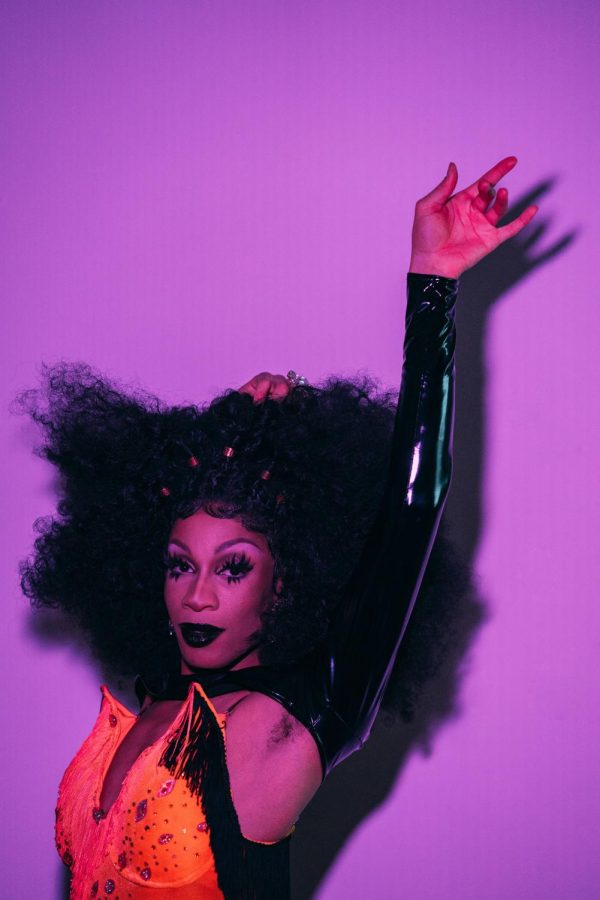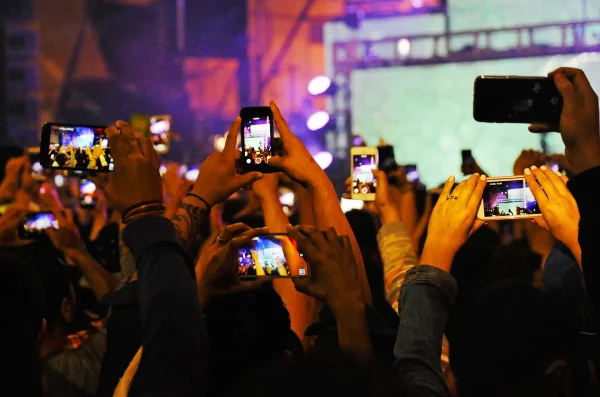Debunking Drag
Bailey Klinkhammer explores common myths and misperceptions about drag
Modern drag can be traced back to the Ancient Greeks, and in modern Americans history to William Dorsey Swann, the first person ever to refer to themselves as the “Queen of Drag.”
Apr 16, 2023
“RuPaul’s Drag Race,” the famed drag show hosted by RuPaul, recently celebrated its 200th episode during its 15th season on air. While the 200th episode aired, dozens of bills surrounding restrictions on the art of drag sat in state congresses. The general American public has become too comfortable with the state of LGBTQ+ rights in the U.S. Since Obergefell v. Hodges, we’ve seen the American public accept the state of affairs for members of the LGBTQ+ community. Because of this comfort, politicians take their chance to demolish LGBTQ+ spaces, namely within the drag sphere.
It’s a common misconception that drag began within the last fifty years. In reality, we can trace the history of drag all the way back to Ancient Greece. When women were barred from performing in Greek theaters, the male actors would dress in drag to perform the female roles. Outside of the theater, drag performances were also prominent in religious ritual performances in Greece. Over the years, drag has evolved in many different ways, in an array of countries. In the United States specifically, one of the first recorded drag queens was named William Dorsey Swann, the first person to ever refer to themselves as “the Queen of Drag.” Swann was born into slavery in Maryland, just three years before President Lincoln issued the Emancipation Proclamation. In the 1880s when Swann entered his twenties, he began hosting his own drag balls in Washington D.C. Swann embraced the danger that came along with hosting these balls; while Swann was known for hosting these balls, they were also known for holding their own when police would eventually raid these drag balls. Swann was arrested countless times during raids on their drag balls, even being sentenced to 300 days in prison after one raid in 1896, convicted of “being a suspicious character” and “keeping a disorderly house.” Swann paved the way for drag shows and the liberation of black LGBTQ+ people in America.
Shortly after Swann retired from hosting drag balls, drag continued to evolve. This time, it reflected the Greek theaters aforementioned. During the Progressive Era, “female impersonators” began to take New York City by storm, one by the name of Julian Eltinge even performing on Broadway. Alongside the growth of the drag scene in NYC came the prominence of night clubs. Since the identities of LGBTQ+ people in NYC were criminalized, they made their own spaces to express themselves and their identities.
These night clubs provided a space for that, as well as a forum for drag shows at entertainment in these clubs. As LGBTQ+ people were continued to be persecuted for their identities, the dire need for their liberation became more and more apparent – and drag queens were a vital part of the LGBTQ+ protests and riots that took place in the 1960s and 1970s. Drag is about the celebration of being queer and queer expression. Drag queens offer representation of queer joy.
Drag is a catalyst of gay culture. For decades, queens helped open up spaces for queer culture and gay liberation. They are a symbol for queer joy and expression. Their art takes hours, and drag queens push the label for facets of fashion, makeup and hairstyling, as well as entertainment – but they are being persecuted. It’s nothing new to their history, but after a period of mild acceptance of the general public, this turnaround is jarring. Across the country, drag has been persecuted. In states like Tennessee, Kentucky, Oklahoma, Idaho and Missouri, there are statewide bans on “adult cabaret performances” – which is what these states are choosing to define drag as. What conservatives are pushing is a lie – yes, there are drag shows that are risque. Yes, there are drag shows that are not an environment children should be in. But that is the same way we classify movies. It’s the same way we classify music, plays, books and TV. Because drag is an art form. Drag contains multitudes. One of the biggest myths about drag is that it’s based on sexuality, that it’s too sexual for children to engage in, that it’s too vulgar and too dangerous. In some instances, drag is too sexual for children to be exposed to. But, just like music, tv shows, movies and books – there are going to be times where it’s not appropriate for a child to engage with that media. Does that mean that the entirety of an art form is inappropriate for children? Does that mean that there can’t be censored versions of that art form? No. So why is drag being generalized as entirely vulgar and dangerous? The short answer is because conservatives want the gay community to not be seen and not to be heard. They want to make the gay community invisible. If you aren’t familiar with drag – it is very, very hard for a drag queen not to be seen or heard. You cannot make drag invisible. But, you can criminalize and imprison queens, effectively placing a gag on the gay community. You can restrain it and police it, which is exactly what’s happening in these states that are introducing and passing these bills.
Drag is about the celebration of being queer and queer expression. Drag queens offer representation of queer joy. According to homophobic conservatives, one of the biggest dangers facing America today is representation. When a little kid sees someone older fully and freely expressing themselves, they understand that it’s okay for them to do that as well. Erase that representation, and you effectively erase children looking for a place to feel accepted in society. That is why these anti-drag bills are being introduced. Drag isn’t dangerous, but the celebration of queer expression is – and that is what’s being policed here.


















JANET EICKE • Apr 21, 2023 at 8:50 am
Good article, thank you for sharing and researching this rich history.